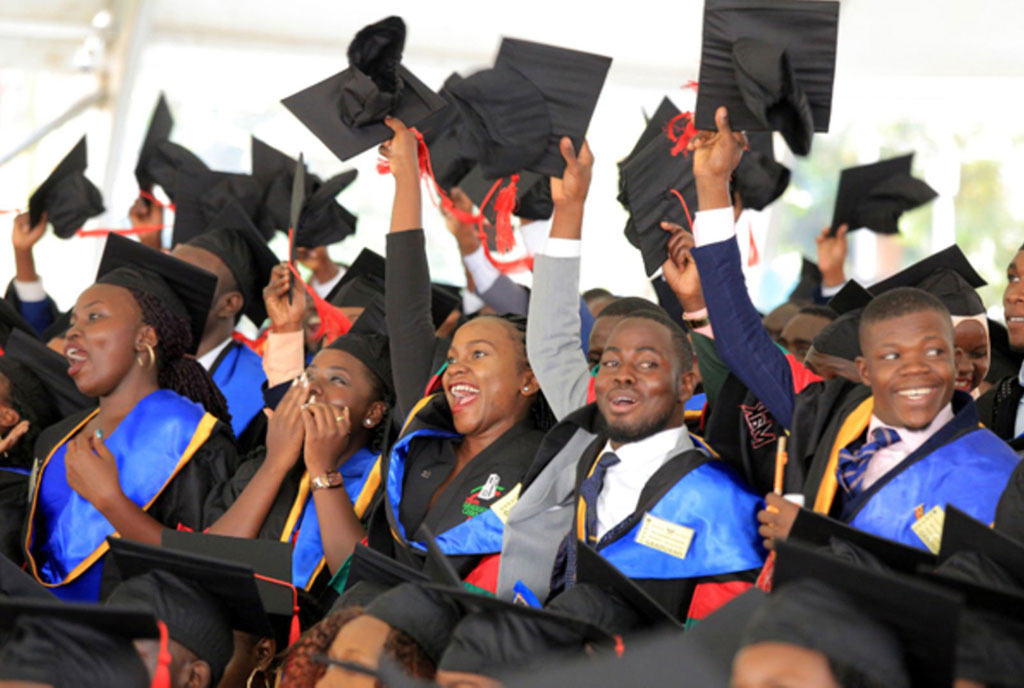Prime
Loan scheme favours children of the rich

Parents attend the fourth day of the 73rd graduation ceremony at Freedom Square, Makerere University, in February. A number of them missed seats, which the institution blame on breach of guidelines. PHOTO/FRANK BAGUMA
What you need to know:
- The Cosase committee found that “...districts from predominantly underprivileged regions such as Karamoja and Sebei were not well represented...’’
As Parliament last week pushed the government to reverse its suspension of the higher education loan scheme, MPs also said they are concerned that poor students are being left out contrary to what was intended.
When it was set up nine years ago, the government promoted the Higher Education Students Financing Board (HESFB) as a measure to support qualifying students hailing from economically depressed backgrounds to attain higher education.
However, on Thursday last week the House Committee on Commissions, Statutory Authorities and State Enterprises (Cosase) published a report which showed that funding has been taken away from the underprivileged.
A disproportionate majority of those benefitting from the loan scheme are from districts that also have the highest number of students studying on government sponsorship, MPs found.
“…The committee found that whereas the loans scheme was meant to aid students from underprivileged backgrounds, the vast majority of beneficiaries of the scheme, according to information from the HESFB, were from districts that were not as underprivileged,” Cosase noted.
The committee observed that “on the contrary, districts from predominantly underprivileged regions such as Karamoja and Sebei were not well represented among beneficiaries”.
Parliament Speaker Anita Among wondered why the government continues to sponsor relatively well-off students, who excel because they generally attend Uganda’s best schools.
“We are putting little money into the students’ loan scheme but we are putting a lot of money into government sponsorship. The children we are sponsoring are children of rich people,” she said as MPs protested the suspension which was announced on July 6.
Other MPs had supported fears that a suspension would rob poor students of the opportunity to advance their education.
Government reluctantly agreed to withdraw the suspension after Ms Among asked the Prime Minister “to direct the Education ministry to reverse that decision and call for advertisement and recruitment of new students”.
Third Deputy Prime Minister, Ms Rukia Nakadama Isanga, who was holding fort for her boss, relented under some pressure from MPs, saying “I am directing the minister of Education to continue advertising and recruiting students for the loan scheme”.
Two weeks ago, the scheme’s board said it would not admit new students into the scheme for the coming academic year because of a shortage of funds.
Debt
The government reportedly owes several universities millions of shillings in unpaid tuition fees for past and present beneficiaries. A sign that the government was struggling to meet its commitments is reflected in HESFB’s data which reveals that only 625 students were supported in 2022 compared to 1,273 ta inception in 2014.
To-date, most beneficiaries have come from the richer central region district of Wakiso – which has historically produced the highest numbers of students joining higher institutions on government sponsorship.
The Cosase report revealed that 525 students from Wakiso have received tuition funding under HESFB, compared to just one student from Amudat District found in the very poor and historically marginalised Karamoja Sub-region.
It also revealed a bias skewed towards western Uganda with Wakiso closely followed by Ntungamo at 488 beneficiaries, Mbarara with 416, Sheema accounting for 384, Bushenyi with 330 and Rukungiri 308.
Eastern Uganda’s Busia District completes the list of top beneficiaries with 332.
At the bottom end, are other depressed districts in Karamoja and West Nile sub-regions regions? Karenga district, found in Karamoja, has only two; Madi Okollo and Obongi in West Nile each have four beneficiaries.
Others are Kalaki with seven; Karamoja’s Nabilatuk and Teso sub-region’s Kapelebyong each tie at nine recipients and Kassanda district in central has 10. Another poor performer is also found in Karamoja’s Kaboong with only 11 beneficiaries; far western Uganda’s Kitagwenda at 12 and Bugweri district in eastern Uganda with 15.
Moroto in Karamoja, Butebo and Buvuma all tie at 16, while West Nile’s Terego and mid-western’s Kikuube have 18. The neighbouring Kakumiro and Kwania (Lango) with 19 beneficiaries complete the list of districts with less than 20 beneficiaries since the loan scheme took effect in 2014.
The HESFB was intended to be a revolving fund, providing loans and scholarships to Ugandan students who qualify to study in the country’s higher education institutions but are unable to pay their way.
It aimed to increase equitable access to technical and higher education, ensuring regional balance while specifically targeting students enrolled for mainly science courses deemed to be critical for national development.
Instead, MPs found that the scheme has fallen way short. “The committee observed that there is a lack of regional balance among the beneficiaries of the loans scheme,” Cosase reported.
PWDs hard hit
The committee also found that while the board reported progress in providing loans to persons with disabilities (PWDs), it did not cater for necessary learning aids.
While the board said all PWD applicants who qualify get awarded, the committee was concerned that PWDs have other unaddressed challenges.
“The loans provided to PWD beneficiaries, for example, do not separately cater for assistive devices. The PWD beneficiaries, therefore, find that they have to pay interest on the money they use to buy assistive devices. In this way, the scheme has not been as beneficial to the PWDs as it ought to be,” the report stated.
Enrolment
At least, 13,400 students have gone through HESFB since 2014; with 11,393 for degrees and 2,012 for diplomas in science disciplines. A smaller fraction of PWDs have received support to study courses of their choosing.




